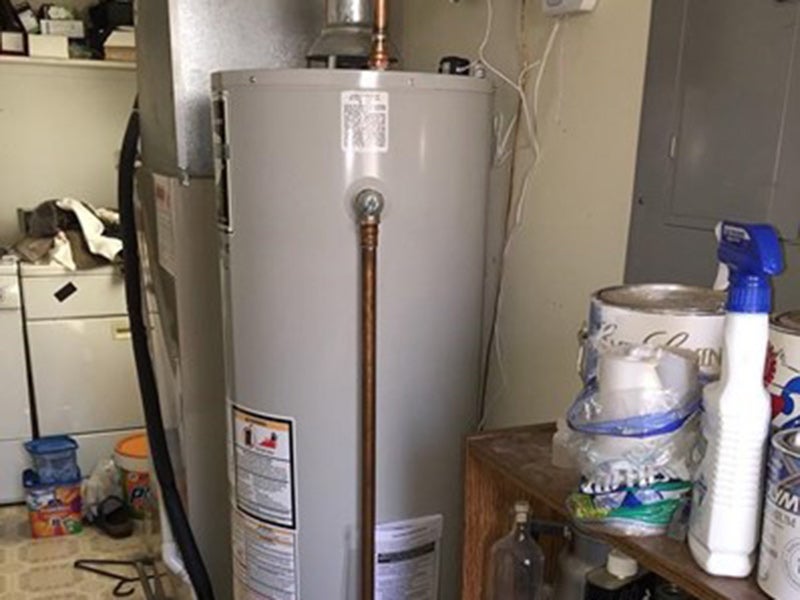How to Effectively Care for Your Home's Hot Water SystemExpert Guidance for Caring for Your Home's Hot Water System
How to Effectively Care for Your Home's Hot Water SystemExpert Guidance for Caring for Your Home's Hot Water System
Blog Article
We have uncovered this post pertaining to Tips For Maintaining Your Hot Water Heater down the page on the web and decided it made good sense to write about it with you in this article.

Warm water is necessary for everyday convenience, whether it's for a revitalizing shower or washing recipes. To guarantee your hot water system runs efficiently and lasts much longer, regular upkeep is crucial. This article supplies functional ideas and understandings on just how to preserve your home's hot water system to stay clear of disruptions and costly repair work.
Introduction
Keeping your home's warm water system might appear complicated, however with a few easy steps, you can guarantee it operates smoothly for several years ahead. This guide covers everything from recognizing your warm water system to DIY upkeep suggestions and understanding when to hire specialist help.
Relevance of Preserving Your Warm Water System
Routine maintenance not just extends the life-span of your hot water system yet also guarantees it runs effectively. Ignoring maintenance can bring about reduced performance, higher power expenses, and even early failing of the system.
Signs Your Hot Water System Demands Maintenance
Recognizing when your hot water system requires attention can protect against major concerns. Watch out for indicators such as irregular water temperature, weird sounds from the heating unit, or rustic water.
Comprehending Your Warm Water System
Prior to diving into upkeep tasks, it's handy to understand the standard parts of your hot water system. Typically, this includes the hot water heater itself, pipes, anode poles, and temperature controls.
Monthly Maintenance Tasks
Normal monthly checks can assist capture minor concerns before they escalate.
Purging the Water Heater
Purging your hot water heater removes debris buildup, enhancing efficiency and extending its life.
Checking and Replacing Anode Rods
Anode poles avoid deterioration inside the tank. Checking and replacing them when worn out is important.
Evaluating and Readjusting Temperature Level Setups
Readjusting the temperature settings makes sure optimum efficiency and safety.
Do It Yourself Tips for Maintenance
You can perform numerous upkeep tasks yourself to keep your hot water system in leading problem.
Looking for Leakages
On a regular basis check pipelines and connections for leakages, as these can cause water damages and greater costs.
Testing Pressure Alleviation Valves
Checking the stress safety valve guarantees it works properly and stops too much stress accumulation.
Insulating Pipes
Shielding warm water pipelines minimizes warm loss and can save energy.
When to Call a Professional
While DIY maintenance is advantageous, some problems need professional proficiency.
Complex Concerns Calling For Professional Help
Examples include major leaks, electrical problems, or if your water heater is consistently underperforming.
Regular Expert Maintenance Advantages
Professional upkeep can consist of complete assessments, tune-ups, and guaranteeing conformity with safety standards.
Verdict
Normal upkeep of your home's hot water system is vital for efficiency, longevity, and cost savings. By following these tips and knowing when to seek professional help, you can ensure a dependable supply of hot water without unexpected interruptions.
How to Maintain an Instant Hot Water Heater
Before tinkering with your hot water heater, make sure that it’s not powered on. You also have to turn off the main circuit breaker and shut off the main gas line to prevent accidents. Also turn off the water valves connected to your unit to prevent water from flowing into and out of the appliance. 2. When you’re done, you have to detach the purge valves’ caps. These look like the letter “T” and are situated on either side of the water valves. Doing so will release any pressure that has accumulated inside the valves while at the same time avoid hot water from shooting out and burning your skin. 3. When the purge valves’ caps are removed, you have to connect your hosing lines to the valves. Your unit should have come with three hoses but if it didn’t, you can purchase these things from any hardware or home repair shops. You can also get them from retail stores that sell water heating systems. Read the user’s manual and follow it to complete this task properly. When the hosing lines are connected, open the purge port’s valves. 4. You should never use harsh chemical cleaners or solutions when cleaning your unit. Make use of white vinegar instead. It should be undiluted and you’ll probably use about 2 gallons. 5. Now flush your water heater. This task should probably take about 40 minutes. We can’t give you specific directions for this because the procedure is carried out depending on the type, model and brand of your heater. With that being said, refer to the user’s manual. 6. When you’re done draining the unit, you have to turn off the purge port valves again. Remove the hosing lines that you earlier installed on each of the water valves. Put the valve caps (purge port) back in their respective places and be very careful so as not to damage the rubber discs that are found inside these caps. 7. Now that everything’s back in place, check your user’s manual again to find out how to reactivate your water heating system. 8. Once it is working, turn one of your hot water faucets on just to let air pass through the heater’s water supply pipes. Leave the tap on until water flows smoothly out of it. https://www.orrplumbing.com/blog/2014/september/how-to-maintain-an-instant-hot-water-heater/

We were shown that article on Tips on Maintaining a Water Heater from a buddy on our other blog. Do you know another person who is fascinated with Tips on Maintaining a Water Heater? Why not promote it. Many thanks for being here. Please check our website back soon.
Book Service Now Report this page